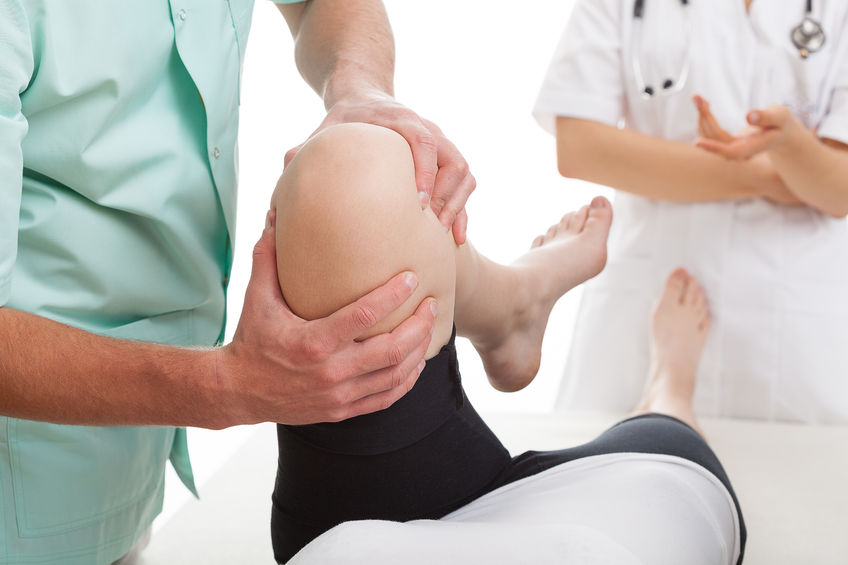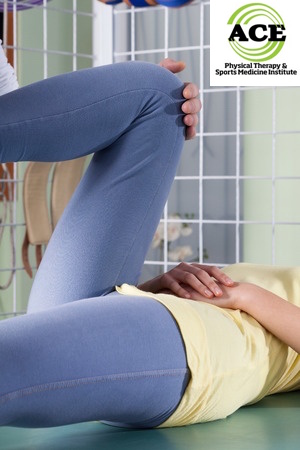ARTHROFIBROSIS AND PHYSICAL THERAPY

Tid Bits of Info
- Arthrofibrosis: Arthro: joint, fibr: fiberous, osis:abnormality/inflammation.
- The likelihood of the onset of Arthrofibrosis increases with prolonged immobility of a joint.
- Gradual pressure/force can create the phenomenon of “creep” or elongation of scar tissue.
- Physical Therapists are trained to mobilize a joint. These are specialized manual techniques that will stretch the scar tissue.
- Follow the advice of your Physical Therapist to help prevent arthrofibrosis of a joint.
Our simple day-to-day activities depend upon joints that move freely through a complete range of motion without pain. We don’t usually even think about using our joints unless there is a problem. Stiffness, pain, difficulty moving a joint is an indication that something is wrong. Arthrofibrosis is one of the most debilitating joint conditions and can cause pain and discomfort whether moving or sitting still.
Arthrofibrosis is an inflammatory condition in which an excess amount of scar tissue forms within the static stabilizing structures and at times in the joint itself. Patients may experience the effects of arthrofibrosis after a trauma to a major joint. The synovial joint is the most commonly injured joint. This type of joint uses fluid (synovial fluid) to provide lubrication, nourishment and protection to the articular surfaces of bones. The ends of the bones are surrounded by “leather-like” structures that provide static support to the joint. These structures are the capsule and ligaments of the joint.
A trauma to the joint can cause the scar tissue to develop. The trauma can be in the form of an arthritic change, surgery, fracture sites, severe soft tissue damage and almost anything that causes the inflammatory process to occur. This excess scar tissue forms within the static stabilizing structures and at times in the joint itself. This results in pain and limited motion, which can cause other problems within and around the joint such as atrophy of the muscles, soft tissue contractures and softening of the articular cartilage.
The cause of the condition can be a global response that the patient suffers from and is referred to as primary arthrofibrosis. The cause for this global, systemic response is puzzling and unknown at this time. There are theories that link this type of arthrofibrosis to the chronic inflammatory response and suggest that there might be an auto-immune component. The other type of arthrofibrosis that is encountered in any orthopaedic physical therapy center is secondary arthrofibrosis. This is a local response to some type of trauma and remains in one joint. Unfortunately, if it is not treated successfully other joints in the kinetic chain can be adversely affected.
 Physical Therapy plays a vital role in the restorative process for arthrofibrosis regardless of what treatment is implemented. Initial treatment usually involves the administration of anti-inflammatory drugs and a thorough physical therapy rehabilitation program. The key to the treatment is to be aggressive enough to restore motion, but not too aggressive and cause an elevation of the inflammatory response. The physical therapist designs a program that focuses on restoring motion first and addresses strength gains later. The exercise routine should be performed in a low level of pain and an attempt should be made to perform the movements with proper movement patterns. Passive stretching and manual mobilizing techniques are utilized extensively in the first phase of this type of rehabilitation.
Physical Therapy plays a vital role in the restorative process for arthrofibrosis regardless of what treatment is implemented. Initial treatment usually involves the administration of anti-inflammatory drugs and a thorough physical therapy rehabilitation program. The key to the treatment is to be aggressive enough to restore motion, but not too aggressive and cause an elevation of the inflammatory response. The physical therapist designs a program that focuses on restoring motion first and addresses strength gains later. The exercise routine should be performed in a low level of pain and an attempt should be made to perform the movements with proper movement patterns. Passive stretching and manual mobilizing techniques are utilized extensively in the first phase of this type of rehabilitation.
The therapy sessions are usually long and at times grueling. There is pain when The Physical Therapist must stretch and mobilize the involved joint to stabilize the bones and apply a force directly to the scarred tissue. While this is usually painful, it is an important part of recovery. This type of specialized stretching and mobilization can provide a force that is great enough to elongate the scarred, shortened tissue but not cause extensive damage and enable the inflammatory process to get out of control. General stretching is a must, but in most cases not sufficient to overcome the detrimental condition of arthrofibrosis.
There are times that the condition requires surgical intervention. The surgeon will restore most of the lost motion while the patient is under the effects of anesthesia. Once again, physical therapy is essential in order to maintain and develop the positive results of the surgery. A 6-8 weeks post op physical therapy rehabilitation program is vital. The focus of the rehabilitation program is strictly maintain the motion that was gained during surgery and keep the inflammation under control. The development of strength in the joint and throughout the kinetic chain are considered important when the joint has “calmed down” and the motion is maintained.
Arthrofibrosis is a condition that can be treated successfully and the physical therapy program must focus on motion prior to strength to ensure that the joint can move through its full range of motion. Once that has occurred (usually passive motion is achieved first) then the focus can slowly change to a strength development program which will provide the patient the capability to regain their full functional use of the involved joint.
























